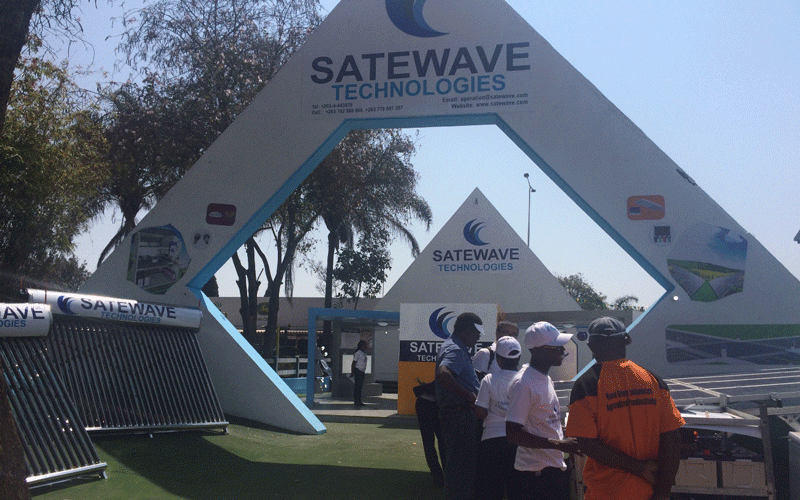
Specifications Steed 5 Single Cab 2,0-Litre WGT 4X2 Engine: 2,0-litre turbo diesel Power: 78kW at 4 000 rpm Torque: 225Nm at 1 400 rpm to 2 800 rpm. Transmission: five-speed manual Fuel economy: 8 ℓ/100km
This is the single cab for those who want to get the job done on a tight budget.
Most of all for those who believe in getting the job done in an inexpensive way but without compromising on the quality of their outcomes and production without downtime.
If you want a no frills bakkie and are just after a work horse that delivers on power and, I am tempted to add, without breakdowns at all, then this is your bakkie.
Have you ever seen one broken down by the side of the road? I doubt it.
Have you ever seen one being towed away by a breakdown vehicle?
I have not. Yet I have seen the more established brands being towed away.
They do not call it a Steed for nothing.
- Chamisa under fire over US$120K donation
- Mavhunga puts DeMbare into Chibuku quarterfinals
- Pension funds bet on Cabora Bassa oilfields
- Councils defy govt fire tender directive
Keep Reading
A steed is a working horse that is used as a mount (especially for warfare).
A warhorse has to be ready, listens to its master, never abandons the master (they die together during battle) and never gives up during battle.
GWMs Steed 5 is indeed a workhorse.
It’s not scared of hard work.
It is appropriately named.
The running costs of this bakkie are next to peanuts.
All being equal you will spend no more than US$600 for every 20 000 km on service and maintenance.
The running costs for the competition is close to treble for every 20 000 km. Now, imagine the savings on your business.
It will add to your bottom line The test drive vehicle I had was the 2.0- litre turbocharged diesel 4×2, which produces 78kW at 4 000 rpm with a torque of 225Nm at 1 400 rpm to 2 800 rpm.
I will admit it’s not the swiftest bakkie on the road, but its torque makes it more than capable of pulling heavy loads with ease.
When you buy a bakkie you are not buying speed but torque. Torque is a twisting force that speaks to the engine’s rotational force and measures how much of that twisting force is available when an engine exerts itself.
Engines in mainstream cars and bakkies usually generate 135Nm to 600Nm of torque.
That torque is created by the pistons within an engine as they reciprocate up and down on the engine’s crankshaft, causing it to rotate (or twist), continuously.
This torque is then transferred to the vehicle’s wheels through the transmission and drivetrain.
Torque output is a result of many variables, including the size of the engine, and how it is designed to operate.
In simple terms, the more torque an engine has, the better suited it is to hard work such as towing, hauling or climbing steep gradients.
This is why torque is often the figure of utmost importance when moving something big and heavy especially with bakkies.
I have driven the Isuzu, Ford Ranger and Toyota single cabs.
These are beautiful single cabs.
At face value, the Steed 5 may not seem as impressive as these trucks.
However, once you get behind the wheel, it’s a different story.
The quality of the interior is equal to, if not slightly better than some of the more expensive bakkies.
The cabin has few
frills, but it’s spacious, and the controls are well laid out and simple to use.
The ergonomics of the interior are what you need from a bakkie that you can use at your construction company, farm, mine or any other related business.
The seats are relaxing and comfortable.
The leg room is spacious. Interior features include electric windows with one-touch opening on the driver’s side, air-conditioning, a radio with USB port, and power-assisted steering.
There are no airbags or ABS/EBD, however.
The 235/70/R16 tyres are large enough to contend with most potholes without fuss.
With a 3 050mm wheelbase, a large, double-insulated load bin (5 015mm x 1 800mm x 1 735mm) and a 1t carrying capacity, the bakkie offers ample space for big loads, especially when combined with the torque.
Like many a workhorse, the Steed 5 is equipped with leaf springs in the rear, giving the unladen bakkie a bumpy ride.
But the bucket seats help to smooth out this vibration, and the interior is relatively quiet, with minimal wind noise entering the cabin.
Noise in a vehicle is undesirable.
Vibrations too are unpleasant.
Harshness, which is a ride quality issue where the vehicle’s response to the road transmits sharply to the driver.
It normally describes a firmer than usual response from the suspension system.
NVH is a term used to describe these conditions.
The NVH in the Steed 5 is excellent.
I drove it on the dirt road and highway.
It felt stable on all kinds of roads.
It took the potholes in Houghton Park, Waterfalls without a fuss.
Rural roads are in most cases now better than some urban roads.
Try driving in Houghton Park and you will attest to what I am saying.
It’s like the roads were mined up by “makorokoza”.
They now look like a 4×4 obstacle course.
Value for money It is the price leader in its category. It’s the most inexpensive bakkie on the market.
The Steed 5 single cab should draw the attention of any serious farmer, miner, construction company or business person on the market for a new bakkie.
In short, this vehicle is a good option if you’re on a tight budget, need a reliable, hard-working vehicle and most of all if you value your money.
The Steed 5 comes with a three-year/100 000km warranty.
Price is from US$29 300 for the diesel and from US$23 500 for the 2.2litre petrol.
A portion of it is payable in RTGS at bank rate.
- Follow [email protected].











